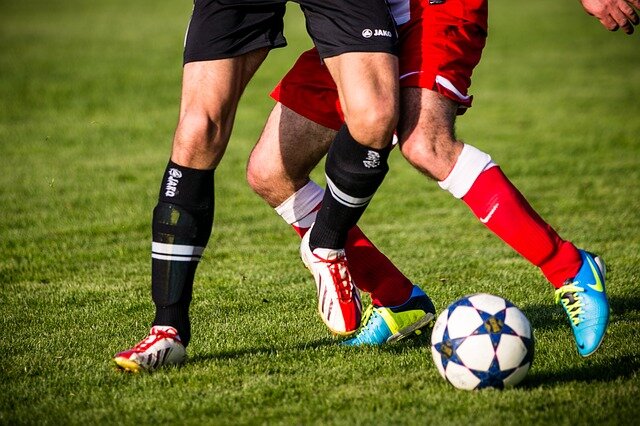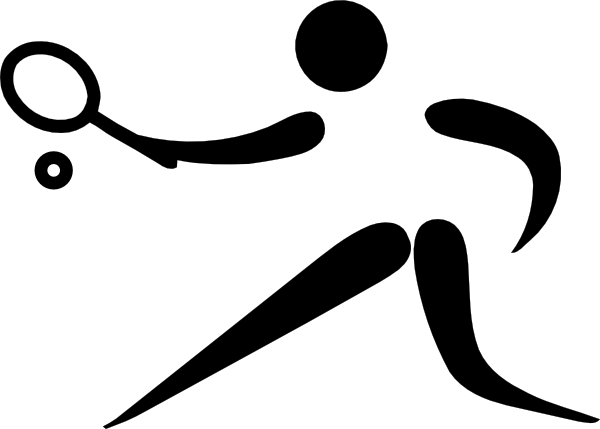Football is one demanding sport and requires one to be flexible, agile, strong and of great endurance. However, before jumping onto the pitch, it is important that you stretch and warm up. Doing this comes with a host of benefits to the player, no matter their skill level. As such, if you are a pro or amateur player, it is important that you always take the time to stretch and warm up before getting active on the field.

Why Stretching Is Important
Stretching is important as it prepares the muscles and the body for more activity. A recipe for disaster is running into a pitch without having prepared the body well enough. Chances are, getting to hurt yourself or tearing a muscle is very much likely. Why? Because cold muscles are rigid and stiff. As such, sudden turning, twisting, and stretching may cause the muscles and other connective tissues to experience great tension.
At the same time, stretching not only helps prepare the muscles for the activity to come but also prepares you mentally – making you more focused on the activity awaiting you or on what brought you out there.
The benefits of stretching include:
• Lowered chances of injury
• Increases skill, power, agility, and performance
• Prepares the player mentally for the session or game on hand
Basic Warming Up Stretches
Standing Quad Stretches
Quads or quadriceps are a muscle group found along the front of the thigh and are made up of the vastus medialis, the quadriceps femoris, the vastus intermedius, the rectus femoris, and the vastus lateralis. It is this group of muscles that handle extending the leg and straightening the knee, and the muscles are the primary movers when it comes to cycling, climbing and running. Quadricep muscle injuries are normally caused by flexibility or strength imbalance between the hamstring and quadriceps.
How to stretch quadriceps:
Stand on one of your legs (if you need extra support, the grab onto something solid). Bend your knee while bringing the heel towards your buttock before reaching for your ankle with one of your hands. Stand up straight and you will feel a slight pull along your thighs’ and hips’ front. Hold this stretch for about 30 seconds. Release and do the same for the other leg.
Hamstring Stretch
The hamstring is one muscle that often gets injured or torn by most soccer players. As tightness in the lower back and hamstrings is normally brought about by muscle stiffness and pain, chances are hurting or injuring your hamstring in the near future are high. It is, therefore, important that you stretch before jumping onto the field to reduce the chance of hamstring injuries.
Hamstring stretching:
Sitting on the floor, stretch your legs out in front of you with the knees straight and feet lying flat against a wall or box. In slow, steady movements, lean forward at your hips keeping your knees straight while sliding your hands up.
Standing up straight, swing your left leg forward while keeping it straight and then touch your toes with your right hand. As you lower yourself, extend your leg backward to stretch your hip flexors. Drop it down and repeat the same procedure with the other side.
Plant your right foot on the floor and maintain a straight line from the back of the left foot to the back of your head. Lean forward and reach forward to touch your right toes while lifting up the opposite leg as you go down, before returning back up. Change legs and repeat the same procedure on the other leg.
Group Drill Stretches
Another great way to stretch for soccer practice or playing is working out in groups. There are plenty of group drills that could serve as great stretchers. Here is one group drill that could come in handy:
Have your team make a circle that is about 20 yards in diameter and at arms width apart from other players on either side. Place a cone at the center of this circle and have all players jog to the center of the circle before jogging backwards to the edge of this circle. Vary these runs – have them run with their knees high, sidestepping, heel flicks, hopping on one leg or lunge striding, but it is important that you keep the intensity light.
Soccer stretches are essential in ensuring that you stay safe and fit when playing the game. It is important that you always warm up. The above are some of the basic procedures that you should always strive to do. At the same time, there are many more that could be done. Take time and do some research for more soccer stretches.



